What Do Lovebirds Eat?
This page contains affiliate links. We may earn money or products from the companies mentioned in this post through our independently chosen links, which earn us a commission. Learn More
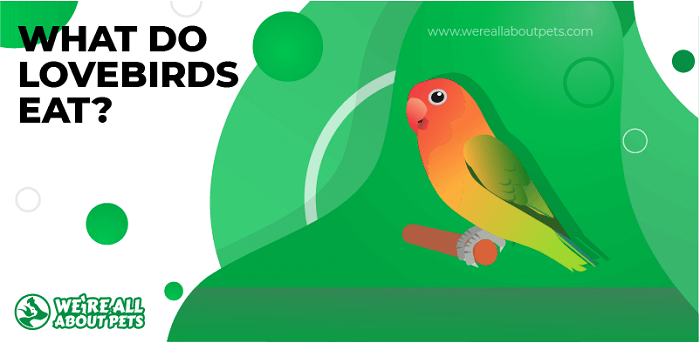
If you’re looking for a sweet, affectionate pet bird, the lovebird is one to consider. These small, stocky parrots form strong bonds when kept in pairs, but they can also bond with their owners.
Lovebirds are curious, intelligent birds and they come in bright colors. Like most birds, they require a spacious cage as well as plenty of time to exercise outside of the cage. Mental stimulation is important, as is a healthy and balanced diet.
Providing your lovebird with a proper diet is essential for long-term health and wellness. Not only do you need to know what to feed your pet bird, however – you also need to know what not to feed it.
Here’s what you need to know about safe and unsafe food for your lovebird.
Quick Navigation
Compare Best Commercial Lovebird Food
|
Runner Up
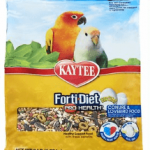
2. Kaytee Egg-Cite! Forti-Diet Pro Health Conure & Lovebird Food |
||
|
Protein
14.3% Min |
Protein
15.5% Min |
Protein
11% Min |
|
Fat
16.55% Min |
Fat
10% Min |
Fat
9% Min |
|
Fiber
9.8% Max |
Fiber
12% Max |
Fiber
11% Max |
|
Moisture
15% Max |
Moisture
12% Max |
Moisture
11% Max |
Safe And Unsafe Foods For Lovebirds

A healthy diet for love birds is all about balance. Your pet requires a blend of protein, fats, carbohydrates, and essential vitamins and minerals. Before getting into those details, however, it’s a good idea to familiarize yourself with the specific foods your pet can and cannot eat safely.
Wondering what your lovebird can and can’t eat? We’ve assembled a list of dozens of foods that are and aren’t safe for your lovebird. Check them out below!
27 Foods That Are Safe For Lovebirds:
- Seeds
- Seed mixes
- Bird pellets
- Apples
- Bananas
- Blackberries
- Cherries (no pit)
- Dates
- Figs
- Grapefruit
- Kiwi
- Melon
- Pears
- Pineapple
- Plums
- Mango
- Strawberries
- Asparagus
- Carrots
- Cabbage
- Corn
- Cucumber
- Kale
- Parsnips
- Pea pods
- Cuttlefish
- Oyster shells
11 Foods Lovebirds Can Eat In Moderation:
- Nuts (unsalted)
- Grapes
- Cooked beans
- Cooked potatoes
- Cooked sweet potatoes
- Dandelions
- Whole grains
- Whole-grain cereal (unsweetened)
- Small amounts of cooked fish
- Hard-boiled egg
- Cooked lean meat
8 Foods That Are Not Recommended For Lovebirds:
You may not need to panic if your lovebird eats the occasional chip or cracker, but these foods shouldn’t be a replacement for a balanced diet. These foods are not recommended but may not be toxic:
- Human food
- Junk food
- Fried food
- Peanuts
- Dairy
- Grit
- High-fat foods
- High-sugar foods
12 Foods Lovebirds Should Not Eat:
While some foods that aren’t’ recommended for budgies may not do any harm, there are certain foods that are toxic to birds. Avoid these foods entirely:
- Avocado
- Onions
- Mushrooms
- Garlic
- Fruit pits
- Fruit seeds (especially apple)
- Coffee or tea
- Alcohol
- Honey
- Rhubarb
- Chocolate
- Sugar-free candy
Understanding which foods are and are not safe for your lovebird is very important, but a healthy start starts with understanding your lovebird’s nutritional requirements. Read on to learn the specifics of what to feed your lovebird in different life stages.
Types Of Lovebird Diets
Many inexperienced bird owners believe birds eat only seeds. While many birds consume seed-based diets in the wild, seeds aren’t the only thing they consume. In fact, a seed-only diet is a recipe for malnutrition – especially in pet birds.
Technically speaking, lovebirds are omnivores, so they are capable of digesting both plant and animal material. In the wild, however, lovebirds feed primarily on seeds, fruits, and vegetables – insects may be part of the diet, but they don’t make up a significant part.
As a lovebird owner, your biggest decision is between feeding your pet a pelleted diet or a seed-based diet. Either way, you’ll need to supplement the diet to ensure nutritional balance.
Here is a quick breakdown of the different components of a pet lovebird’s diet:
- Seed – Though seeds make up the majority of a wild lovebird’s diet, they should only make up about 60% of your pet’s total daily diet if you’re not feeding pellets. Make sure the seeds are fresh and be sure to offer a variety – don’t just let your lovebird pick out its favorites.
- Pellets – Nutritionally balanced pellets are the preference of many pet bird owners because they provide essential nutrients in the right proportions. Even if you choose a pellet diet, however, you’ll still need to supplement your lovebird’s diet with fruits and vegetables.
- Fruits and Vegetables – Fresh fruits and vegetables should be offered in small amounts daily, making up about 20% to 25% of your lovebird’s diet. Be sure to offer a variety and refer to the lists above for safe and unsafe options.
- Treats – Feed your lovebird treats in small amounts only a few times a week. High-fat seeds like sunflower seeds make a good treat, as do mealworms, shelled nuts, and a little hard-boiled egg.
Now that you know what kinds of foods will make up your pet lovebird’s daily diet, you’re probably wondering how much to feed. Keep reading to learn about feeding recommendations for these birds.
Meeting Your Pet Lovebird’s Nutritional Needs
As you well know by now, a healthy diet for your lovebird all comes down to balance. You understand the importance of including a variety of foods in your own diet, and they same is true for your pet.
You are responsible for your lovebird’s health and wellbeing. It’s your responsibility to understand and provide for your pet’s nutritional needs. Many bird owners find a commercial pellet is the best way to do that because these foods are uniquely formulated for the nutritional needs of lovebirds. You’ll still need to supplement your bird’s pellet diet with fresh foods, but it should cover all the major bases.
In addition to providing your lovebird with a nutritionally balanced pellet or seed-based diet, you may want to consider supplementing with a source of calcium like a cuttlebone or oyster shells. Calcium becomes particularly important once your lovebirds start to lay eggs.
To give you an idea what lovebirds eat and much you should be feeding your pet bird in different stages of life, refer to this chart:
Daily Lovebird Feeding Chart |
||||
| Age | Seeds | Pellets | Fruits/Veggies | Treats |
| 2 to 3 months (weaned) | Millet and other fine seeds | Transition to mixed diet with lovebird seed mix and pellets | Small amounts daily, well chopped | None |
| 3 to 5 months | Reduce proportion of seeds to pellets | Feed mixed diet of pellets and lovebird seeds, increasing the ratio of pellets to seeds over time | Small amounts daily, well chopped | Small amounts of millet |
| Adult | 1 to 1.5 tbsp. seeds
OR 1 to 1.5 tbsp. pellets |
1 to 1.5 tbsp. seeds
OR 1 to 1.5 tbsp. pellets |
20% to 25% of the daily diet from chopped mixed fruits and veggies | Occasional, small amounts |
In addition to providing a healthy and balanced diet for your lovebird, be sure to provide access to fresh water at all times as well. Birds tend to get their water dishes messy with dropped seed, so be prepared to clean and refill the dish at least once a day.
Recommended Commercial Lovebird Foods
Commercial diets are a popular choice among pet bird owners because they ensure the bird gets the right balance of nutrients. A seed-only diet comes with a high risk for malnutrition and it can be tricky to find the perfect blend of nutrients with a homemade diet.
When it comes to feeding your lovebird a commercial diet, it’s important to select a high-quality product and to supplement it as needed with fresh foods. Choose a formula made with high-quality, natural ingredients and try to find one specifically designed for lovebirds.
Here are some of our top picks for the best commercial lovebird food:
Volkman Avian Science Lovebird & Conure Bird Seed
Product Info
- Protein: 14.3% Min
- Fat: 16.55% Min
- Fiber: 9.8% Max
- Moisture: 15% Max
Guaranteed Analysis

Dry Matter Basis

Kaytee Egg-Cite! Forti-Diet Pro Health Conure & Lovebird Food
Product Info
- Protein: 15.5% Min
- Fat: 10% Min
- Fiber: 12% Max
- Moisture: 12% Max
Guaranteed Analysis

Dry Matter Basis

Sweet Harvest Conure and Lovebird Bird Food
Product Info
- Protein: 11% Min
- Fat: 9% Min
- Fiber: 11% Max
- Moisture: 11% Max
Guaranteed Analysis

Dry Matter Basis

Looking for more recommendations on what to feed your pet lovebird? Check out our in-depth guide to the best commercial lovebird foods.
Lovebird Feeding FAQs
What do lovebirds eat in the wild?
Technically speaking, lovebirds are omnivores which means they can digest both plant and animal material. In the wild, however, lovebirds feed primarily on seeds, fruits, berries, and vegetation. They may eat insects on occasion, but lovebirds do not typically eat meat.
How much do lovebirds eat?
The lovebird is a fairly small species of parrot, so they only need about 1 to 1 ½ tablespoons of seed or pellets per day. You should also supplement your pet’s diet with fresh fruits and vegetables.
What do lovebirds drink?
Lovebirds drink water and they should have fresh water available at all times. Make sure to clean and refill your lovebird’s water dish at least once a day.
Do lovebirds eat insects?
Wild lovebirds feed primarily on seeds, fruits, berries, and vegetation. In the wild, they may consume small insects, but they aren’t a significant part of the diet. If you choose to feed your lovebird insects for an occasional treat, stick to smaller insects like mealworms and flies.






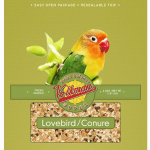
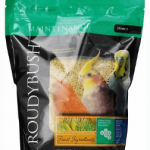
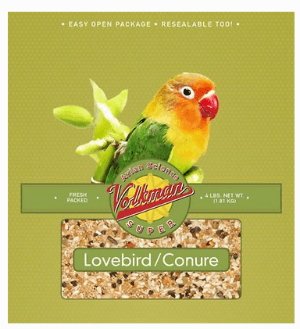
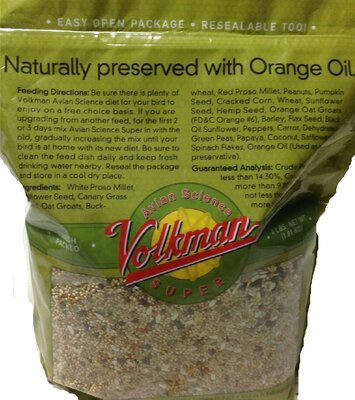
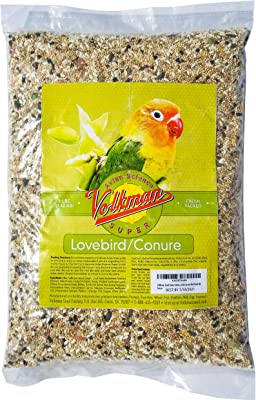
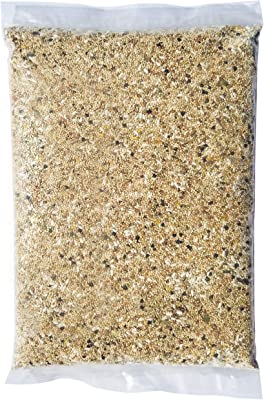
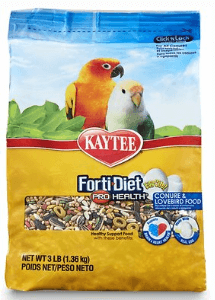
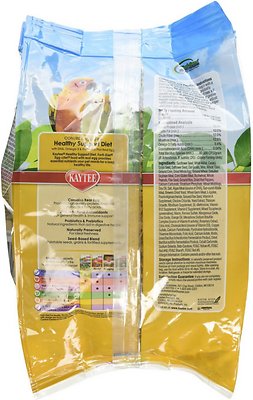
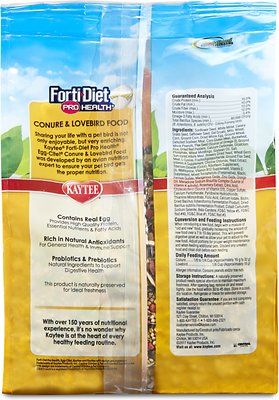
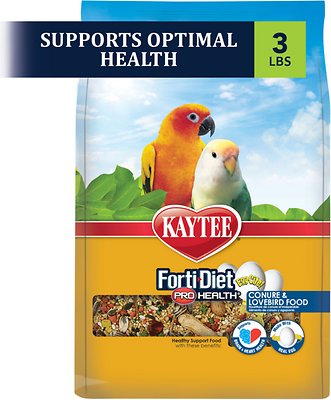


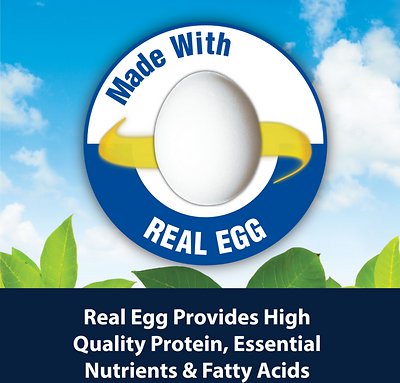
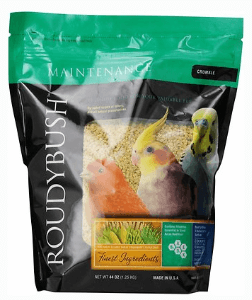
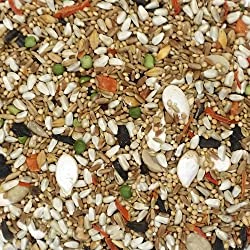
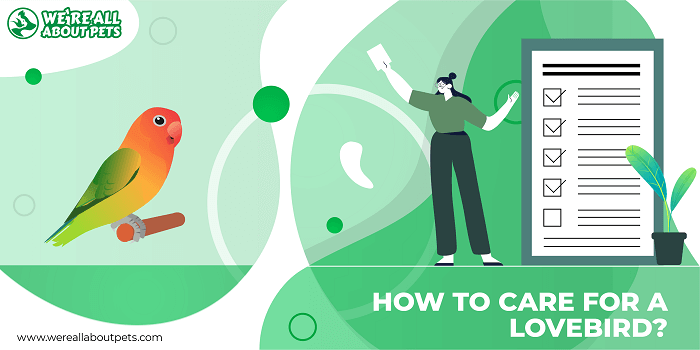
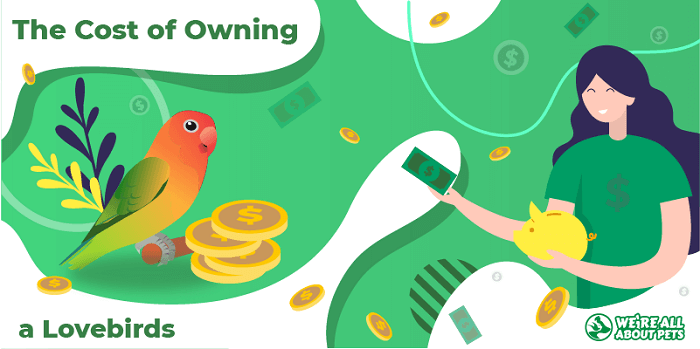

Thanos
Can I feed my lovebird raisins?
Kate Barrington
Yes, raisins are safe for lovebirds. They are, however, fairly high in sugar compared to fresh fruits so you may want to feed them in limited amounts.